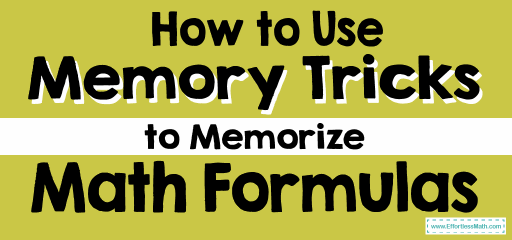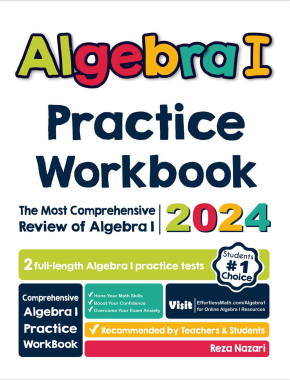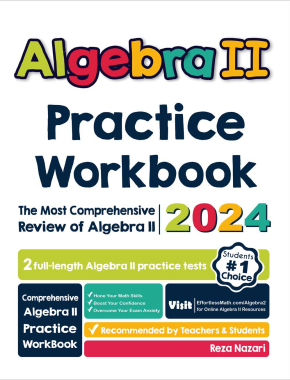How to Use Memory Tricks to Memorize Math Formulas?

Use established mnemonics or make up your own.
Understand how the formulas came about.
Still thinking about how to remember formulas? Before trying to cram any formula, try to understand how the formula was proven, each formula’s elements, and why they make sense together. Understanding the workings of any given formula makes it a lot easier to remember.
Let’s test this with something simple. Consider the area of an isosceles triangle as ½bh, where b is the triangle’s base, and h is the height of the triangle. If we split the triangle vertically down the middle into two equal parts, it’ll form two right-angle triangles. Place the hypotenuses of these triangles together such that they form a rectangle. You’ll find that the rectangle’s width is the same as half the base of the isosceles triangle, while the length of the rectangle is the same as the perpendicular height of the triangle.
So essentially, the area of the rectangle and that of the isosceles triangle are the same. So if the dimensions are identical, as we stated in this example, then the ½bh of an isosceles triangle is the same as the L×B of a rectangle.
Do you see how understanding the fundamentals of these shapes makes it easier to understand these formulas? This ultimately works in other areas of math beyond geometry.
Use, use, and reuse.
It’s one thing to know a formula; it’s quite another to understand how to use it. This level of intuition can only come from consistent practice. Move beyond cramming to understanding. Whether you’re a student, a tutor, or a professional, there are plenty of examples in academic texts and online forums, and websites that you can work with.
It helps to focus on one formula at a time. Plug in different figures and scenarios every time until the understanding of the formula becomes intuitive. Follow the same approach with all the formulas you can get your hands on. This way, whenever a math scenario presents itself—whether in an exam or career situation—you immediately know how to access the problem and what formula is needed for the solution.
The Absolute Best Book to Ace the College Algebra Course
rmation you know about it to reconstruct the formula in your mind.
Make use of different media.
Using mnemonics and learning why and how a formula came are fantastic memory tricks. In addition to these, consider diversifying the media you use in learning.
Instead of just textbooks and online forums, consider incorporating flash cards. This is an excellent way to bring your friends and family in on the action, as they can use the cards to help you learn. You could also write out the formulas on a large piece of paper or cardboard and paste them all around your room. Whether you’re in learning mode or not, daily exposure to them will boost your retention rate.
You could also utilize visual-audio learning. Go to YouTube or other related video resources online and find videos that explain the concept of these formulas visually. Visual learning is really more effective for most people than any other form of learning. Also, simply reciting these formulas out loud to yourself can help too.
Final Words
Remember, there is no point in employing any back-door tricks while trying to memorize formulas. Your brain will let you down when it matters the most.
So what is the fastest way to memorize formulas? The white-hat memory tricks outlined here are designed to help you learn these formulas and retain them mentally, too. However, you must be ready to commit your time to this process, or you won’t get the best from it.
About the author
This article was written by Ana Mayer, a project manager with 3+ years of experience. While projects can be done without her participation (which means almost never), she likes to read and create expert academic materials for the Online Writers Rating writing review website. Such work allows her to write articles on the most relevant topics of today.
The Best Books for Ace College Algebra
Related to This Article
More math articles
- How to Determine Functions?
- 8th Grade PEAKS Math Worksheets: FREE & Printable
- How is the TASC Test Scored?
- Top 10 CLEP College Mathematics Prep Books (Our 2023 Favorite Picks)
- How to Prepare for the ASVAB Math Test?
- How to Solve Word Problems Involving Comparing Percent and Fractions?
- 8th Grade SBAC Math FREE Sample Practice Questions
- Balancing Math Assignments and Academic Papers: Tips for Busy Students
- Number Properties Puzzle – Challenge 22
- 4th Grade MCAS Math Worksheets: FREE & Printable


























What people say about "How to Use Memory Tricks to Memorize Math Formulas? - Effortless Math: We Help Students Learn to LOVE Mathematics"?
No one replied yet.